LDPE Film Washing Recycling Line
LDPE Film Washing Line – An efficient, turnkey recycling system for washing and drying contaminated plastic films (LDPE, LLDPE, etc.), delivering high-quality, reusable plastic flakes.
Web Menu
Product Search
Exit Menu
LDPE Film Washing Line – An efficient, turnkey recycling system for washing and drying contaminated plastic films (LDPE, LLDPE, etc.), delivering high-quality, reusable plastic flakes.
Designed with robust, industrial-grade components, this washing line reliably handles high contamination loads (up to 70–80% impurities) without clogging or excessive wear. Wear-resistant shredding and cutting units protect against damage from sand and debris, ensuring continuous operation even in demanding applications. The process is arranged in multiple washing stages – including pre-washing, cold and hot water washing, and intense friction scrubbing – so that each type of contaminant (from large grit to water-soluble residues) is effectively removed in turn.
With over a decade of expertise in plastic recycling machinery, Boxin has engineered this LDPE film recycling line for easy operation and maintenance. The entire line is automatically controlled, with interlocked modules that coordinate feeding, washing, and drying. This not only maximizes throughput but also ensures stable performance and operator safety. Additionally, a circulating water filtration system is used to minimize fresh water usage and maintain cleaning efficiency, making the process more eco-friendly and cost-effective.
After washing and drying in the line, the plastic film flakes come out clean and with moisture content under 5%. The dry, uniformly sized flakes can be fed directly into pelletizing extruders to produce granules, or they can be sold/used as-is for various plastic manufacturing. Production capacity is flexible (standard models from 300 kg/h up to 3000 kg/h), and each line can be customized to match your specific throughput and cleanliness requirements.
|
|
|||
1. Pre-shredder / Crusher (Wet Granulator)
|
2. Friction Washer
|
3: Sink-Float Separation Tank
|
4: Hot Washing Tank(optional )
|
5. Film Squeezer / Squeezing Dryer
|
6:Finished product display |
|
(The specific configuration and number of each equipment can be adjusted to meet the contamination level and capacity requirements)
Different types of plastic film waste require tailored washing processes. Heavily contaminated agricultural films demand a more intensive setup compared to relatively clean post-industrial scraps or tough PP woven bags. Below we outline the differences and recommended configurations for various film types:
These films (often LDPE) from farmland or greenhouses come mixed with soil, sand, fertilizer residues, and organic matter. Recommended configuration: a robust pre-treatment stage is crucial – including a pre-shredder to break up clumps and a trommel or rinsing pre-washer to remove bulk mud and stones before crushing. Multiple washing steps are needed: e.g. two or more friction washers and float tanks in series to progressively remove stubborn soil and debris. Hot washing with detergent may be employed to eliminate pesticide residues or soluble fertilizers. Enhanced wear protection (such as hardened steel blades and anti-clogging screens) is implemented to combat the abrasive sand. This configuration ensures even extremely dirty farm film can be cleaned effectively, with minimal equipment wear and optimal impurity removal.
This category includes factory scrap (trim film, packaging off-cuts) or clean post-consumer films like stretch wrap from warehouses, which have minimal dirt (maybe dust or labels). Recommended configuration: the process can be streamlined – often a direct crusher (wet granulator) without pre-shredding is sufficient, since the material is already loose and not heavily contaminated. A single-stage friction wash and one float tank might suffice to remove minor impurities, followed by standard dewatering and drying. Hot washing is usually optional, only needed if there are oily contaminants or adhesives from labels/tapes. Overall, fewer machines are required compared to agricultural film lines, making the line cost-effective while still achieving thorough cleaning for these relatively clean inputs.
Woven polypropylene sacks and big bags are typically dirtier than packaging film but differ from soft LDPE film in texture – they are tougher, fibrous, and often come with leftover powdery contents or print ink. Recommended configuration: a powerful pre-shredder is important to tear apart these thick bags and shake out caked contents. Since woven bags can contain sand (e.g. in cement or rice bags) and stubborn prints, the line should include an aggressive friction washing stage and at least one sink-float separation to remove heavy particles.
(For mixed film waste streams, our engineers will combine elements of the above configurations to effectively handle the blend of materials and contamination levels.)
During actual operation, LDPE film washing lines often face a few common issues (especially when dealing with very dirty agricultural films). Below are some typical bottlenecks and our technical optimization recommendations:
Sand clogging: Pipes, pumps, screen filters, and spray nozzles can become clogged by excessive sand and soil present in agricultural film, causing flow blockages.
Blade wear: Shredder and crusher blades dull or wear out quickly when processing film contaminated with sand or small stones, leading to frequent maintenance.
Turbid wash water: Fine dirt and clay can keep circulating wash water cloudy and dirty. If not managed, this reduces cleaning efficiency and can deposit back onto the film.
Throughput reduction: When upstream stages (like pre-washing or separation) don’t remove enough debris, later machines can choke or slow down. Clogged conveyors or overflowing tanks can reduce the overall processing throughput.
Automated Sludge Discharge: Install spiral augers or automatic purging systems at the base of wash tanks and sedimentation units. These continuously remove settled sand and sludge during operation, preventing accumulation. By keeping tanks clean, water flow remains steady and clogs are minimized.
Enhanced Blade Material & Coatings: Upgrade to wear-resistant blade materials such as high-hardness alloy steel (e.g. D2) and consider surface treatments (like cryogenic hardening or carbide coating). These improvements significantly increase blade lifespan in sandy conditions. Additionally, using reversible double-edged blades allows operators to flip to a fresh edge before needing replacement, doubling the usage time and reducing downtime.
Wash Water Treatment & Circulation: Implement a filtration and clarification system for the process water. Multi-stage filters, hydrocyclones, or a settling tank with flocculant dosing can remove fine silt and colloidal particles from the wash water. Cleaner recycled water improves washing efficiency and prevents re-contamination of the film. Maintaining a dedicated water treatment loop also reduces fresh water consumption and ensures compliance with discharge standards for any overflow.
(By addressing the above issues with engineering solutions, Boxin’s washing lines run more smoothly, with lower maintenance needs and consistently high output quality.)
At Boxin, we understand that each client’s raw material characteristics and production goals are unique. Our team is committed to providing a fully customized recycling solution – there’s no need to worry if the standard process flow above doesn’t perfectly match your situation. We will tailor the equipment configuration and process flow to fit your specific needs, ensuring optimal results for your particular film material and contamination level.
From designing the ideal process layout to fine-tuning individual machines, our engineers work closely with you at every step. For example, we can modify module combinations, add or remove certain cleaning stages, or incorporate auxiliary systems like water treatment or dust removal as needed. We also provide factory layout planning services – arranging the machinery to suit your workshop space and even designing optimal drainage and wastewater treatment setups. Simply share with us your raw material samples or key parameters (such as film type, contamination content, desired capacity), and our engineering team will propose the most suitable solution. We pride ourselves on delivering not just machinery, but a complete, hassle-free setup that seamlessly integrates into your operation and maximizes your return on investment.
 |
 |
|
| Customize more suitable configuration according to your actual situation | Design the machine layout according to your workshop drawings | Optimal design of drainage ditch and sewage treatment |
Applicable to various soft film types recycling scenarios
This LDPE/LLDPE film washing line is suitable for a wide range of plastic films and flexible packaging materials. Typical applications include:
Agricultural films (mulch film, greenhouse film, silage wrap) – Heavily soiled LDPE films used in farming.
Industrial packaging films (LDPE/LLDPE stretch wrap, shrink film) – Pallet wrap and packaging films from warehouses and factories.
Plastic shopping bags & wraps (LDPE/HDPE bags, trash bags, plastic wrap) – Post-consumer bag waste and packaging films.
PP woven bags & jumbo bags – Woven polypropylene sacks, big bags (raffia) and bulk bags used for grains, fertilizer, etc., often contaminated with sand or powder.
Other polyolefin films – Including BOPP and mixed PE films from recycling streams.
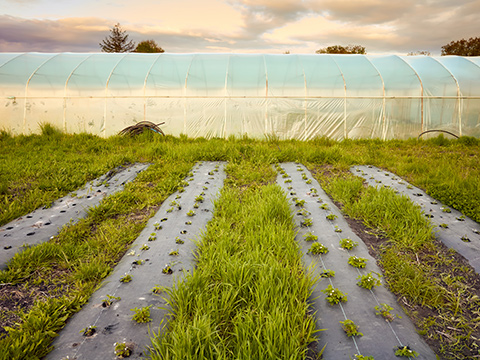 |
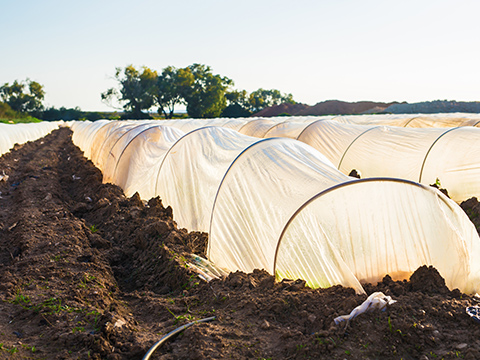 |
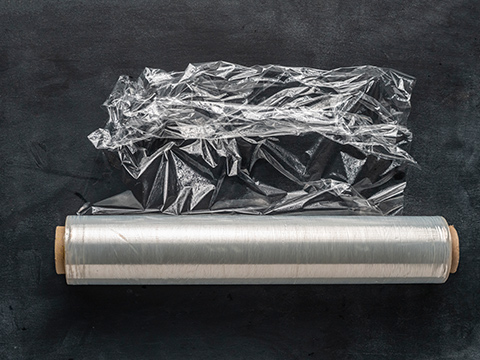 |
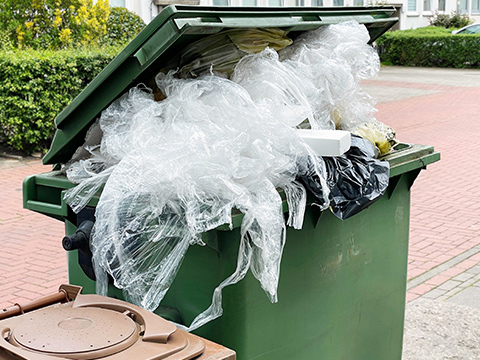 |
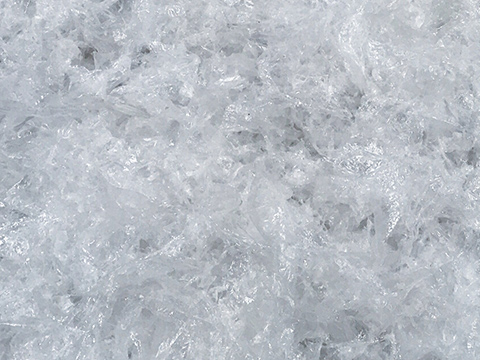 |
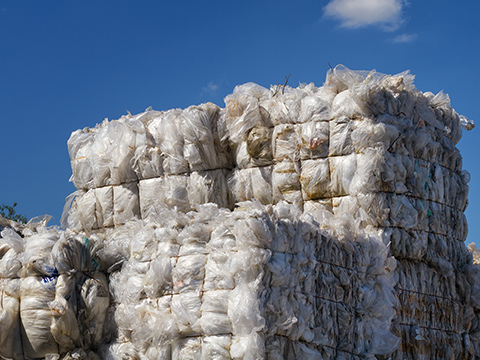 |
|
Model |
Capacity (kg/h) |
Water consumption (T/h) |
Power (KW) |
Labor demand |
Floor space (L×W×H) m |
|
BXC-500 |
500 |
3-4 |
80-100 |
2-3 |
32×6×5 |
|
BXC-1000 |
1000 |
3-4 |
120-180 |
2-3 |
38×6×5 |
|
BXC-2000 |
2000 |
4-5 |
180-260 |
3-5 |
42×6×5 |
|
BXC-3000 |
3000 |
6-8 |
260-330 |
4-6 |
45×7×5 |
|
BXC-4000 |
4000 |
8-10 |
350-450 |
5-8 |
50×7×5 |
